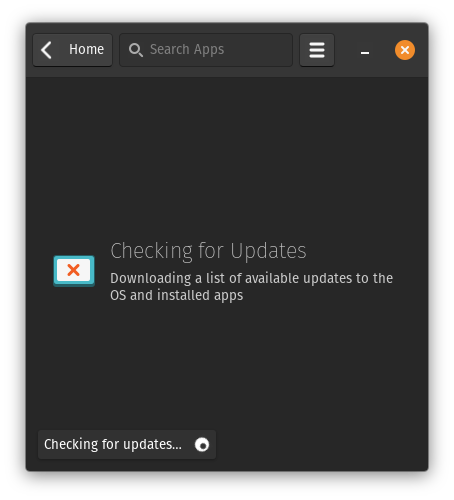Do you happen to own one? If yes, how do you feel about it?
For example, in the PineTime there is a heart rate monitor, but it's too slow and imprecise. Notifications work great, and the battery lasts 20 days or more. How about the Bangle.js 2?
Do you happen to own one? If yes, how do you feel about it?
For example, in the PineTime there is a heart rate monitor, but it's too slow and imprecise. Notifications work great, and the battery lasts 20 days or more. How about the Bangle.js 2?
https://pine64.org/devices/pinetime/
Be warned though, the hearth rate monitor doesn't work particularly well. And there is no sleep tracking afaik.
If you'd prefer something more reliable (but less open), GadgetBridge is an Android app to interface with commercial smart watches through reverse-engineered protocols.
For reference, this is what the "Checking for Updates" page on the Pop!_OS store looks like for me. This icon feels out of place, that's why I assumed this is a placeholder that replaced the correct icon that went missing due to some kind of minor problem with my installation.

I assumed that's the "no icon" placeholder for Gnome. I saw it around as well.
GrapheneOS is certainly on my wishlist too, but Pixels are quite pricey. I guess Rethink is the poor man's version. Just a per-app firewall.
You should install Rethink and see how much garbage your phone constantly transmits and receives. And this is not even a kernel-level firewall, so who knows how much data Google actually exfiltrates...
I don't know about a constant audio stream, nor about keywords, but I noticed that Google Keyboard sends out some data every time you type anything. It's not even that subtle.
I'm definitely no expert so I might not be the best person to try and help, but if you want to try having a 1 on 1 chat to fix it, feel free to send me a PM.
Can you see at least GRUB, or nothing at all?
If you can see GRUB I would try booting with the "nosplash" kernel option, which causes video drivers to be loaded later.
This is a temporary fix, as it might cause other issues, but if it makes the screen work it will be a step in the right direction.
I am not sure... in the case I'm referring to, they were lagging also when scrolling. But it was React, so native browser rendering. And they were actually very large tables, so we had to do some funny things like viewport culling (see react-window).
For what it's worth I've never had any similar performance issues with tables in Flutter (web with the canvas-based render engine, not Android) when applying the same culling technique, they just ran fine at any resolution. Different hardware, though, so it's not an apple to apple comparison.
In any case just to be safe I would personally assume less pixels = less work = less power = more battery life. My opinion is very unscientific though.
Isn't rescaling usually done by the display driver? I am fairly certain this is the case for external displays. Are laptop displays any different?
Edit: with "display driver" I mean the hardware chip behind the display panel, dedicated to converting a video signal to the electrical signals necessary to turn on the individual pixels.
As a web developer, I noticed that some elements such as very big tables struggle to render on 4K but are absolutely fine at 1080p. I would assume that means the CPU and/or GPU are more taxed to draw at higher resolution, and therefore I assume they would draw more power. I might be mistaken. Do you speak by experience?
1099$, seriously? 😅